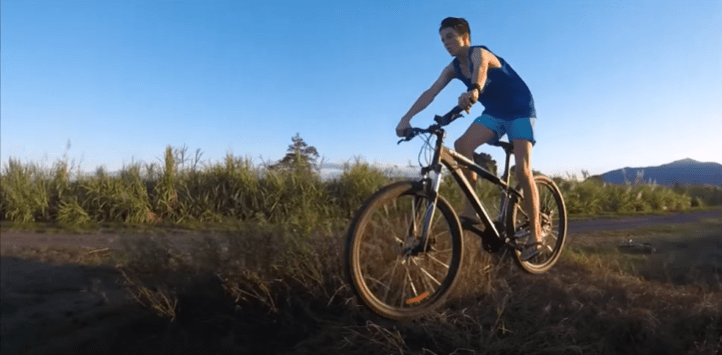

Are you experiencing discomfort while riding your bike? It might be time to consider changing your handlebar. But with so many options available, how do you choose the right one for your needs?
The first step is to identify what type of bike you have – road, mountain, or city – as this will impact the type of handlebar you need. If you’re looking to improve your comfort level, a flat handlebar may be the way to go, whereas a curved handlebar might provide more power.
In addition to the handlebar, you may also want to consider changing the stem to improve your riding position. And don’t forget about accessories like grips and bar ends, which can also make a big difference in your comfort level.
At [company name], we offer a wide variety of bicycle handlebars, stems, and accessories to help you find the perfect fit for your bike and riding style. So why settle for discomfort when you can ride in comfort and style? Choose [company name] for all your biking needs.
A bicycle handlebar is not just for steering. It plays a crucial role in determining your riding posture and comfort level.
The handlebar and stem are the two components that make up the bicycle handlebars. The handlebar is the part where your hands rest and can come in different shapes and sizes. Meanwhile, the stem connects the handlebars to the steering fork.
Changing either the stem or the handlebars can help alleviate discomfort while riding. Unlike the saddle, which only affects the buttocks, the handlebars can impact the entire body.
By adjusting the position of the handlebars and stem, you can customize your riding posture. For example, a longer stem will make you sit more upright, while a tilted stem will adjust the height of the handlebars.
The type of handlebar you choose will also impact your posture. City bikes, mountain bikes, and Dutch bikes typically have handlebars with a strong incline that promote a straighter posture. On the other hand, a flatter handlebar may be more suitable for an aerodynamic riding position.
At [company name], we offer a wide selection of handlebars and stems to help you find the perfect fit for your bike and body. Don’t let discomfort hold you back from enjoying your ride. Shop with us today to find the right handlebars for your needs.
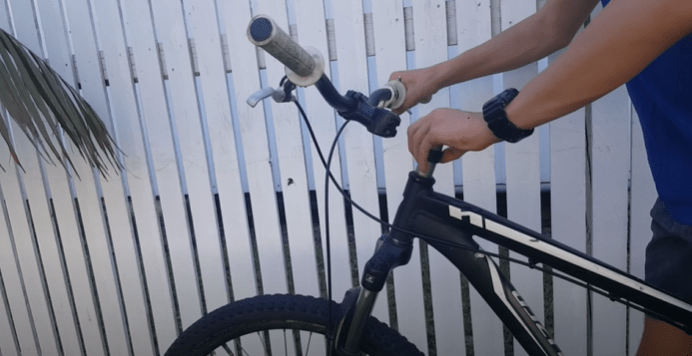

Bicycle handlebars are typically made of either aluminum or carbon. Aluminum is cheaper and more flexible, while carbon is more expensive but offers a lightweight and rigid option that can absorb shocks.
For competitive cycling, handlebars must be able to withstand various types of shocks, such as sprinting and dancing on the pedals. Off-road handlebars must also be able to absorb vibrations.
When it comes to top brands for bicycle handlebars, Fizik, FSA, 3T, Deda, and BBB are among the most well-known.
Choosing the right handlebars for your bike requires careful consideration. At [company name], we can help guide you through the selection process and find the best handlebars for your needs. With our wide range of options and expertise, you can trust us to provide you with the best fit for your bike and riding style. Shop with us today to find your perfect handlebars.
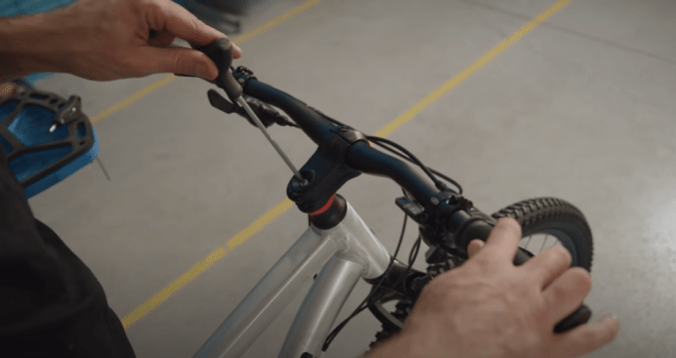

If you’re considering replacing your bike handlebars, there are four main types of handlebars to choose from.
The flat handlebar, also known as a flat bar, is a popular option for all-terrain cycling. It provides precise steering and allows riders to transfer their pedaling energy efficiently. The flat bar handlebar typically features a curved or raised shape with a hollow center.
While the flat handlebar is ideal for sporty and agile off-road riding, its unique hand position may not be suitable for long-distance rides. To prevent wrist numbness, riders can add ergonomic handles like bar-ends or Spirgrips.
At [company name], we offer a wide selection of flat handlebars and ergonomic handlebar accessories to help you customize your ride. Whether you’re hitting the trails or cruising around town, we have the perfect handlebar solution for your needs. Shop with us today to find the right handlebar for your bike.
For everyday or leisurely cycling, a curved flat handlebar is an excellent choice. It provides a comfortable grip, thanks to the inward-facing cuffs that reduce hand pain. However, this type of handlebar may sacrifice some maneuverability.
For urban or touring bikes, a curved handlebar provides excellent riding sensations, especially with raised examples like the Mustache handlebar. The degree of curvature can vary, with a more pronounced curve offering more comfort but less maneuverability, and a higher placement sacrificing efficiency.
At [company name], we offer a range of curved flat handlebars and accessories to help you find the perfect fit for your bike and riding style. Shop with us today to improve your cycling experience.
For long-distance cycling, a multi-position handlebar is a great option as it allows your hands and wrists to relax with different grip options. These types of handlebars are commonly found on touring, trekking, and hiking bicycles.
There are various models of multi-position handlebars, including shapes with animal names like the cow horn or bullhorn, which features a straight handlebar with curved ends for hand placement. Another option is the butterfly handlebar, which resembles the wings of a butterfly and allows for a more elongated posture.
Smaller riders may appreciate the ease of grip provided by these handlebars, particularly if the bike’s frame is slightly too long. At [company name], we offer a range of multi-position handlebars and accessories to help you find the perfect fit for your bike and riding style. Shop with us today to improve your cycling experience.
The road bike handlebar is easily recognizable by its rounded shape and ergonomic design, allowing for hand placement in several positions. It is typically found on road bikes but can also be found on touring, gravel, and cyclo-cross bikes.
The road handlebar allows for improved performance while protecting your hands, arms, and back. It comes in four versions:
Choose the appropriate road handlebar that suits your riding needs to improve your performance and achieve maximum comfort.
The one-piece handlebar with an integrated stem is a highly aerodynamic and rigid configuration that offers precise steering. This type of handlebar is made of carbon and is more expensive than traditional systems like the Giant contact handlebar-stem combo. The integrated stem handlebar provides a streamlined appearance and is highly valued for its aerodynamic properties.
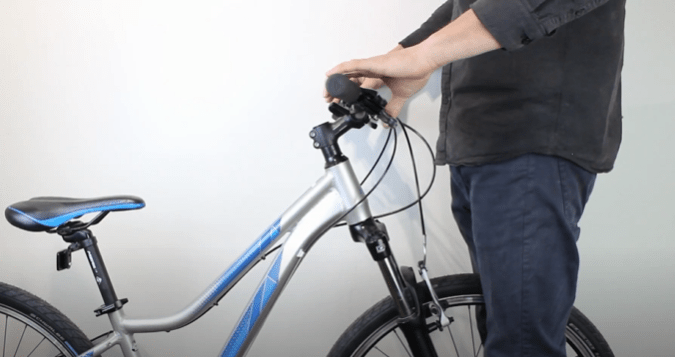

When choosing a bike handlebar, it’s important to understand the two types of stems available:
When choosing the right stem for your bike handlebars, be sure to check the diameter of the handlebars to ensure compatibility.
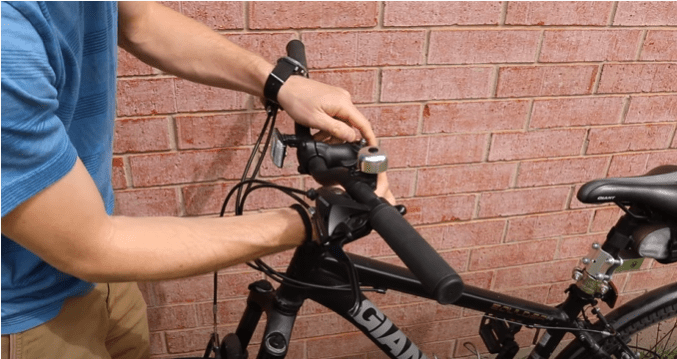

Now that you know the different bike handlebar choices, let’s take a look at the different settings for a handlebar and stem.
When cycling, it’s important to find a comfortable and efficient pedaling position. Your ideal position will depend on the height, width, depth, and angle of the handlebars.
The stem is an essential component for adjusting the distance between the handlebars and saddle. To test if the stem is the right length, sit on the saddle and pedal backward, making sure your knee and elbow don’t collide but also don’t have too much space between them.
If the gap is too small, the stem is too short. Conversely, if the gap is too large, the stem is too long. Finding the right stem length is crucial to your cycling comfort and performance.
The drop of the handlebars is the vertical distance between the top and bottom parts of the handlebar. When the hands are positioned at the bottom of the handlebars, the rider’s position is more inclined, causing stress on the lower back, neck, and shoulders. To avoid discomfort and injury, riders should gradually adjust to this position, starting with a small drop.
It’s important to position the wrists and neck in a natural, relaxed position to prevent undue tension. As a general rule, the top of the stem should be about 1 to 2 cm lower than the horizontal line of the saddle for a comfortable road position.
For a more precise and personalized fit, riders should consult with a professional for a postural study. This can help ensure the optimal position for both comfort and efficiency while pedaling.
Choosing the right depth or reach of your handlebars is important for your biking posture. The depth determines the horizontal distance between the rider and the handlebars, affecting the inclination of the torso. A deep handlebar will provide an aerodynamic base, allowing for more powerful pedaling, while a shallow handlebar will provide more comfort.
The reach also affects the grip of the brakes, with a longer reach requiring more dexterity to use the levers effectively. It’s essential to find the right balance between depth and reach to achieve optimal performance and comfort on your bike. Consulting with a professional for a postural study is recommended to determine the best fit for your body.
Calculating the width of the handlebar is straightforward for most cycling practices. Simply measure the width of your shoulders and choose a handlebar that matches. For more stability, choose a slightly wider model. For example, for a cyclocross or gravel bike, the bottom of the handlebar flares outwards.
MTB handlebars are typically straight and start with a width of between 70 and 80 cm. If you ride on single-track or rough terrain, focus on overall stability and precision, which may come at the expense of power.
For city bikes, choose a narrower and less bulky model if you need to weave between cars.
The angle of your stem can greatly impact your riding position on the bike. A lower angle (or negative angle for those seeking aerodynamics) can create a more aerodynamic, laid-back position on the bike, which can increase power output for athletes. On the other hand, a higher angle can provide more comfort by raising your riding position.
When selecting a stem angle, it’s important to also consider the angle of your steering fork, as this can affect the overall angle obtained. Adjustable stems can also be used to fine-tune your handlebar position.
With just a few tools, you can easily adjust your bike handlebars yourself. All you need is an Allen key, a torque wrench, and handlebar rings known as spacers. These spacers are already installed on the handlebar.
To adjust the height of your bike handlebar, first remove the cap and unscrew the nut on the top of the handlebar. Then, remove the spacers and the handlebar.
Next, position the spacer at the desired height (5mm, 10mm, or 20mm). Note that the total height cannot exceed 30mm. Replace the handlebar, screw in, and replace the plastic screw protector.
To adjust the tilt of the handlebar, unscrew the side nuts, adjust the tilt, and then reattach while keeping some flexibility in tightening the screws. A torque wrench can be used to ensure proper tightening torques of all elements.
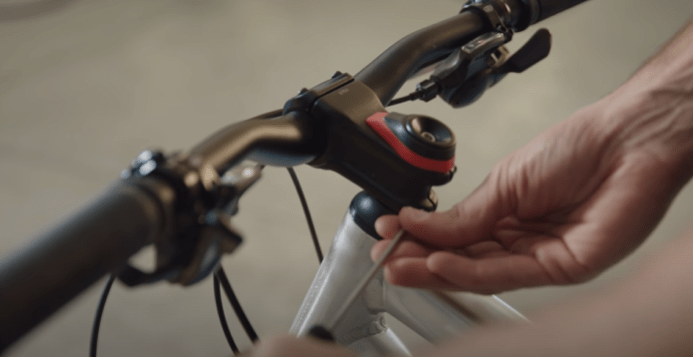

To enhance your comfort, there are various components you can add to your bike handlebars.
If you have a curved handlebar, you can attach bar ends or side handles that resemble horns. Bar ends allow you to generate more power when climbing or accelerating. Their curved design also provides a more ergonomic grip with the palms of your hands facing inward.
Using bar ends can reduce tension, fatigue, and pain that cyclists often experience. You can also alternate between the original hand position and the extended lateral grips while riding.
The placement of the horns makes it easier to climb hills while standing up on your pedals. By providing excellent grip, the cyclist can increase pedaling efficiency.
Installation of bar ends depends on your cycling style. Ergonomic handles are tilted at 15° for a sporty posture, or up to 45° for a more comfortable ride. There are even articulated models that allow you to adjust the angle, height, or distance.
Long-distance riders often appreciate the added comfort.
Spirgrips handles are suitable for MTB handlebars or long-distance bikes. They are positioned to maintain moderate spacing between your arms.
You can still easily access the gear and brake levers while using these functional handles, which protect against tendonitis.
Adding a handlebar extension and riser can give you extra height and make your ride more ventilated. The 360° rotation angle and 45 cm shift from the stem provide an elevated position.
This equipment can accommodate larger handlebar bags, which is useful for cyclists who need extra storage.
The D-bar over bar can be easily installed and offers an additional position for your hands. By placing it forward or backward, you can choose between the original handlebar position or the D-bar handlebar riser. This allows for either a more aggressive or comfortable posture, depending on your ride.
For triathlon participants, handlebar extenders can be useful over long distances to provide arm support, particularly after swimming sessions. This equipment is also useful during time trial events.
The triathlon or CLM bike extender includes an armrest with small foam cushions and is adjustable in length.
Handlebar tape is used to provide a good grip on the handlebars, no matter the conditions of your ride. It prevents your hands from slipping when wet or sweaty.
Depending on the thickness, bar tape can also dampen vibrations. It is available in many materials, including cork, leather, rubber, microfiber, and even gel. For low-light rides, there is reflective tape available.
Quality bar tape is sold by brands such as Fizik, Massi, and Prologo on Amazon.
Note that bar tape is a component that wears out and should be changed regularly.
In summary, changing your bike handlebars is not a decision to be taken lightly. It depends on your cycling style, expected performance, and desired comfort. With the many available models, you will surely find the ideal handlebar to accompany you for many kilometers.
